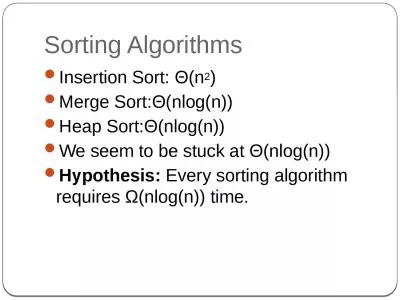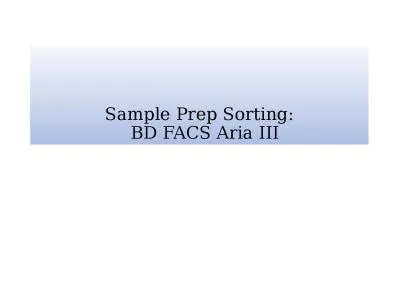PPT-Restricting and Sorting Data
Author : pasty-toler | Published Date : 2016-07-03
LECTURE 8 Outlines Limiting the Rows Selected Consider the table employee employeeid lastnamejobid departmentid assume that you want to display all the employees
Presentation Embed Code
Download Presentation
Download Presentation The PPT/PDF document "Restricting and Sorting Data" is the property of its rightful owner. Permission is granted to download and print the materials on this website for personal, non-commercial use only, and to display it on your personal computer provided you do not modify the materials and that you retain all copyright notices contained in the materials. By downloading content from our website, you accept the terms of this agreement.
Restricting and Sorting Data: Transcript
LECTURE 8 Outlines Limiting the Rows Selected Consider the table employee employeeid lastnamejobid departmentid assume that you want to display all the employees in department. David Borden. CS 32. How Insertion Sort Works. http://commons.wikimedia.org/wiki/File:Insertion-sort-example-. 300px.gif. Author: Swfung8. Somewhat how humans naturally sort things. ( e.g. sorting books by alphabetical order ). 1 Tips and Tools Restricting Tobacco Advertising The Tobacco Control Legal Consortium has created a series of legal technical assistance guides to serve as a startin g point for organizations inter Insertion Sort. Insertion Sort. Sorting problem:. Given an array of N integers, rearrange them so that they are in increasing order.. Insertion sort. Brute-force sorting solution.. In each iteration . Ceng. . 356-Lab2. Objectives. After completing this lesson, you should be able to do the following:. Limit the rows that are retrieved by a query. Sort the rows that are retrieved by a query. Use ampersand substitution to restrict and sort output at run time. Agents of Deposition. The agents of erosion are also agents of deposition.. Depositional rate depends on sediment size, shape and density.. Depositional rate also depends on characteristics of the depositional agent.. Ron Zeira. and Ron Shamir. Combinatorial Pattern Matching 2015. 30.6.15. G. enome rearrangements. Motivation I: evolution. Human genome project. Motivation II: cancer. NCI, 2001. Normal karyotype. MCF-7 breast cancer cell-line. Important Legal Notice:. Materials on this lecture are from a book titled “Oracle Education” by . Kochhar. , . Gravina. , and Nathan (1999), published by Oracle Corp.. For further information, visit www.oracle.com . Insertion Sort. Insertion Sort. Start with empty left hand, cards in pile on table.. Take first card from pile, put in left hand.. Take next card from pile, insert in proper place among cards in left hand.. LECTURE 8. Outlines. Limiting the Rows Selected. Consider the table. . employee. (. employee_id,. last_name,job_id, department_id ) . assume that you want to display all the employees in department. Bubble Sort . of an array. Inefficient --- . O ( N. 2. ). easy to code. , . hence unlikely to contain errors. Algorithm. for . outerloop. = 1 to N. for . innerloop. = 0 to N-2. if ( item[. LECTURE 8. Outlines. Limiting the Rows Selected. Consider the table. . employee. (. employee_id,. last_name,job_id, department_id ) . assume that you want to display all the employees in department. Comparison Sorts. Assorted Minutiae. HW5 Due Friday – Code + . Writeup. HW6 on Sorting – Out Friday, due following Friday. Extra assignment out tonight, due June 2. nd. No late days . Sorting. Sorting. Θ. (n. 2. ). Merge Sort:. Θ. (. nlog. (n)). Heap Sort:. Θ. (. nlog. (n)). We seem to be stuck at . Θ. (. nlog. (n)). Hypothesis: . Every sorting algorithm requires . Ω. (. nlog. (n)) time.. Lower Bound Definitions. BD FACS Aria III . . Excitation Laser. Detection Filter. Example. 488 nm (blue). 695/40 (675-715 nm). PERCP/5.5, 7AAD, EPRCP-EF710. 515/20 (505 – 525 nm). AF488, GFP, FITC. 561 nm (green). 780/60 (750- 810 nm).
Download Document
Here is the link to download the presentation.
"Restricting and Sorting Data"The content belongs to its owner. You may download and print it for personal use, without modification, and keep all copyright notices. By downloading, you agree to these terms.
Related Documents














